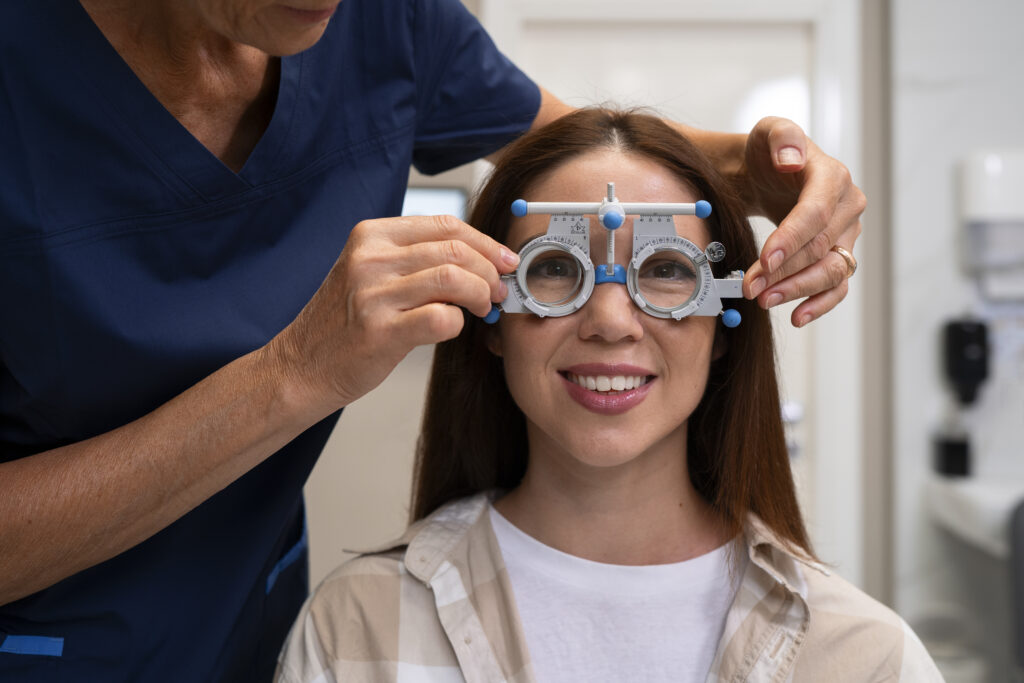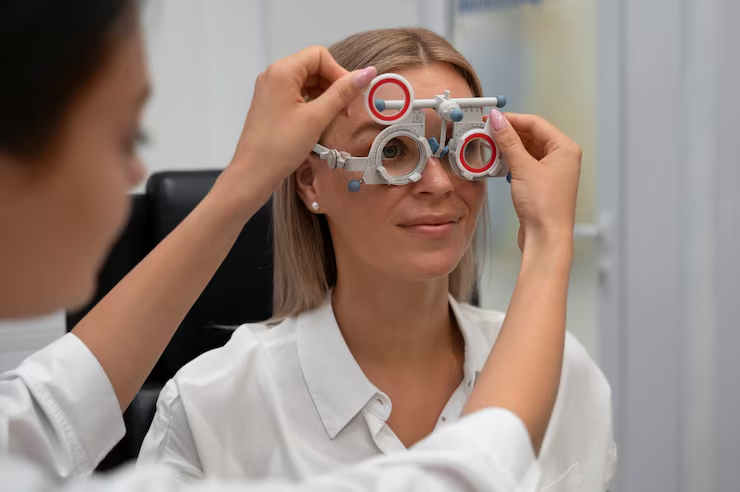Diabetes doesn’t just affect your blood sugar it can also silently harm your eyes. In fact, diabetes is one of the leading causes of vision loss among adults worldwide. The challenge? Many diabetes-related eye problems develop without noticeable symptoms in the early stages. That’s why annual eye exams are a must. With timely check-ups, you can catch issues early and protect your sight for the long term.
Why Diabetes Increases the Risk of Eye Problems
Over time, high blood sugar can damage the tiny blood vessels in your eyes, especially in the retina. This may lead to serious conditions like:
- Diabetic Retinopathy – damage to retinal blood vessels
- Macular Edema – swelling in the central retina
- Cataracts – clouding of the eye’s lens
- Glaucoma – increased eye pressure damaging the optic nerve
The concerning part is that these problems often go unnoticed until they’re advanced. Skipping regular check-ups may put your vision at serious risk.

Benefits of Annual Eye Exams
A yearly eye exam does much more than check your glasses prescription. For those with diabetes, it’s a crucial tool for prevention and overall health monitoring:
1. Early Detection Saves Vision
Eye diseases like diabetic retinopathy progress in stages. When caught early, treatments such as laser therapy or eye injections can stop or slow down damage.
2. Preventing Permanent Vision Loss
Routine screenings ensure timely treatment, reducing the risk of irreversible blindness.
3. A Window to Your Overall Health
Your eyes often reflect what’s happening in your body. Retinal changes may also signal potential issues with your kidneys, heart, or circulation.
4. Keeping Your Vision Clear
Diabetes can cause frequent changes in eyesight due to fluctuating sugar levels. Annual exams help keep your prescription accurate so you see clearly every day.
What to Expect in a Diabetic Eye Exam
A comprehensive diabetic eye exam goes beyond a standard vision test. It may include:
- Visual Acuity Test – Checks how well you see at various distances.
- Dilated Eye Exam – Eye drops widen your pupils, allowing the doctor to view the retina and optic nerve.
- Tonometry – Measures eye pressure to detect glaucoma.
- Imaging Tests (OCT or Fundus Photography) – Capture detailed images of the retina to spot early signs of swelling, bleeding, or damage.
These tests are painless, quick, and can make a life-changing difference.
How Often Should You Get Eye Exams?
- Type 1 Diabetes – First exam within 5 years of diagnosis, then every year.
- Type 2 Diabetes – Begin immediately after diagnosis, then yearly.
- Pregnant Women with Diabetes – Before pregnancy or in the first trimester, with follow-up exams during pregnancy.
Depending on your condition, your doctor may recommend more frequent visits.
Your Action Plan
If you live with diabetes:
- Book an eye exam every year.
- Manage blood sugar, blood pressure, and cholesterol to protect your eyes.
- Watch for warning signs like blurred vision, floaters, or difficulty seeing at night — and report them right away.
Take Charge of Your Vision with Eyemastr
At Eyemastr, we believe your eyes deserve the best care. Regular eye exams are not just about checking vision they’re about preserving your future.
Don’t wait for symptoms to show. A simple annual check-up can help you stay ahead of diabetes-related eye problems and keep your vision clear for years to come.
Book your next eye exam with Eyemastr and safeguard your sight today.


